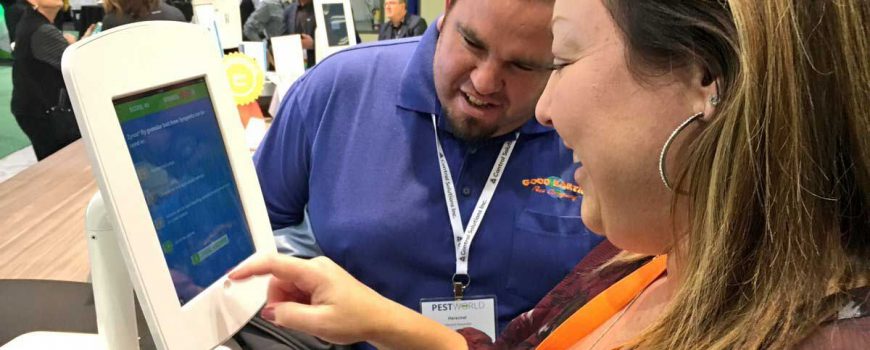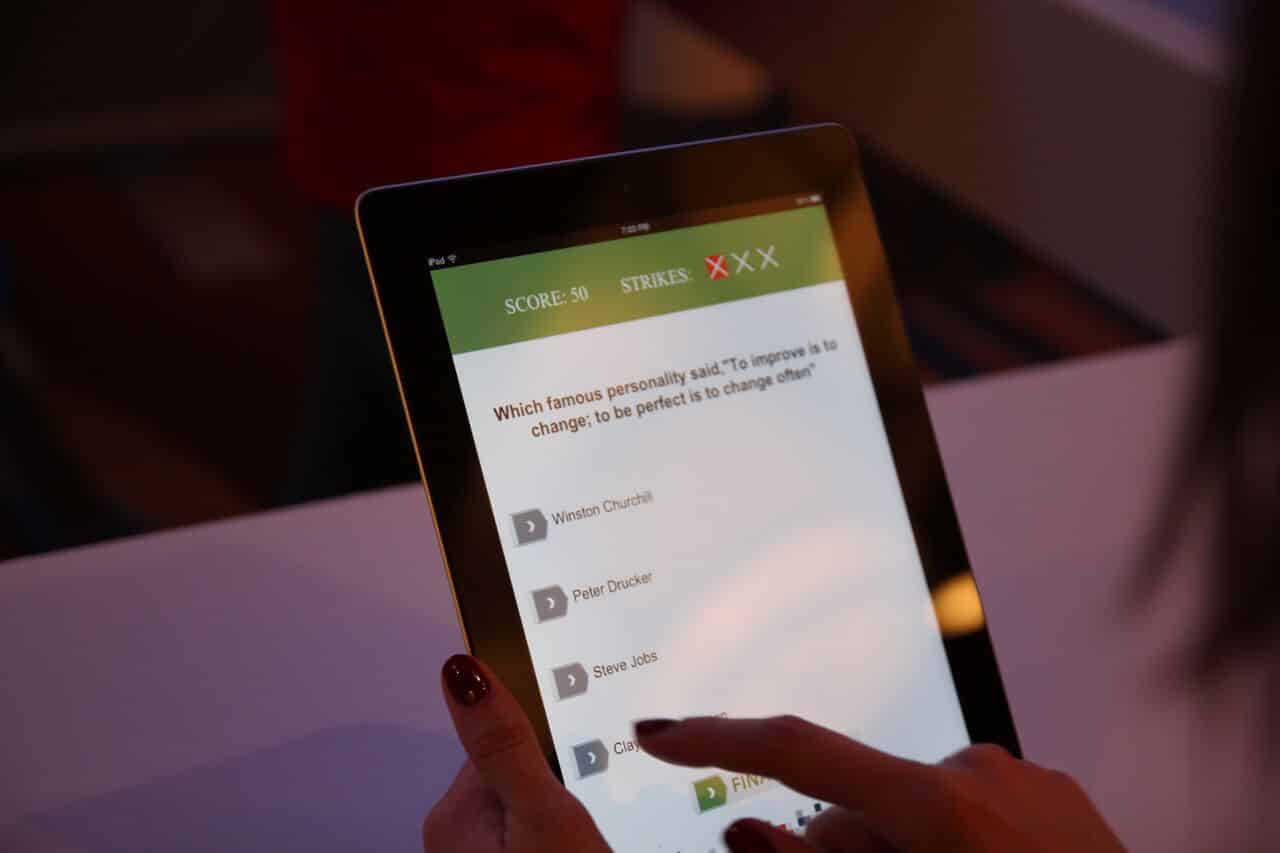How To Write Successful Questions For Your Trade Show’s Trivia Game
Our Challenge Bar Trivia Game is perhaps our most popular game. Trade show attendees love to play trivia to test their knowledge, compete with friends, and win prizes. And we’ve made it easy for trade show exhibitors and event marketers to host this crowd-gathering activity in their booth, with our easy-to-customize software.
But while our technology is easy, the visuals bold, and the crowds eager, it takes some strategy in formulating the questions to get the best results.
Here are some guidelines when you are organizing and writing Challenge Bar Trivia Game questions:
Aim For Happy Attendees!
Beginning with the end in mind, you want trade show and event attendees to be:
- Entertained by an enjoyable experience
- Challenged, but not too often stumped
- Educated about your company or organization
- Feeling more connected to your company or organization
To improve your chances of creating trivia questions that make your attendees happy and better connected, consider these strategies:
Choose Trivia Questions Content Focus
From our experience, clients use the game as another brand touch point to reinforce key messages and learning objectives.
By focusing the trivia questions on the content in their booth, players are able to “ask a booth staffer” or look at a brochure or look at the company website if they need help finding the answers to a question.
Here are 7 different kinds of trivia content we have seen during hundreds of events:
- Product features and benefits trivia
- Learning objective trivia
- Company trivia
- Industry trends and challenges trivia
- Regional trivia (About the city or the region)
- General trivia
The more specific your trivia questions are to your company, the easier it will be for your booth staffers to help the players answer questions. You are also rewarding expertise in your industry or company.
PRO TIP: Most clients use a mix of product/company and industry questions with a few regional trivia questions.
Organize Trivia Questions Into Categories
Organize your questions into 5 to 7 categories, with each category containing at least 5 questions, and potentially up to around 20. These categories should cover different subsets within your overall area of knowledge. For example, if you have overall questions about construction, you could group your questions into subsets about plumbing, electrical, masonry, roofing, and landscaping. While those categories won’t be seen by players, when the event is done and the scores are tallied, you can see in which categories your players’ knowledge is strongest and weakest.
PRO TIP: Some clients will start by identifying the categories and assign learning objectives to each category. Then, they create questions.
Consider Trivia Question Difficulty Level
If you make all the questions easier, then everyone can enjoy playing longer and not get knocked out so quickly they get frustrated. This also works if you want everyone to win a prize. If you make the questions harder, there will be fewer winners, but the winners will be very proud of having won. The best games start with easy questions and have hard questions later to help separate the winners. (By the way, SocialPoint’s Challenge Bar Trivia Game lets you assign greater point values for more difficult questions.)
Choose Trivia Question Format
The most common question formats are multiple choice, and true or false. Because multiple choice questions have 4 answers each, and true/false questions only 2 answers, it’s easier for players to guess the true/false questions. If you want people to learn as well as win, you can have multiple choice questions with 3 choices that are all true, and make the 4th choice “all of the above.”
PRO TIP: Some clients will borrow questions from their training and development department. It saves time!
Consider How Many Trivia Questions You Write
The more questions you write, the less likely that returning players, or players sitting next to each other, will see the same questions. Which keeps them from learning an answer and using it for their next game. We strongly recommend reformatting your questions to create 2-3 questions from each learning concept to save time. You can easily turn one trivia question from a multiple choice into a true/false question, or vice versa.
We recommend that you try out your questions with people on your staff or in your industry to ensure they are clearly written (so that people get them wrong only because they don’t know the answer, not that they can’t understand what you meant to write), and have the level of difficulty you want.
PRO TIP: Encourage other team members to get involved in question creation. It’s a great way to divide the work and speed up the process.
I hope if you’ve been considering using a digital trivia game in your trade show booth, you now have a greater comfort level that you can craft questions that will help you better meet your overall marketing goals with the attendees who visit your booth.
LEARN MORE: Consider 3 different strategic goals you can achieve by how you write your trade show trivia game questions – read Educate Prospects, Qualify Buyers, Recruit Top Talent: Achieving 3 Different Goals With Trade Show Trivia Games.



